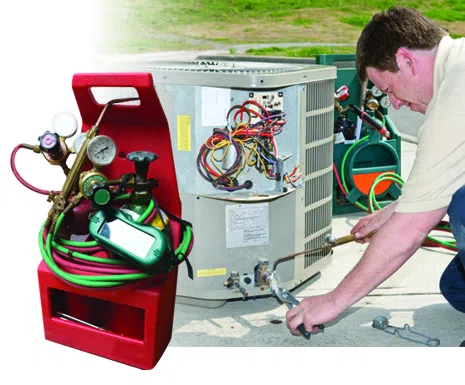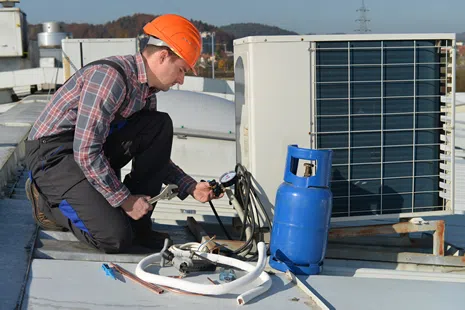Identifying the Tools You Need to Supercharge Your HVACR Senses
Diagnostic tools help HVACR contractors to work smarter. They help identify problems with speed and accuracy, saving contractors time. They improve customer satisfaction by getting it right, the first time, and reducing the number of repeat service calls. Diagnostic tools also give contractors the opportunity to fix looming problems that consumers might not have noticed yet, allowing contractors to sell other products and services not related to the original service call.
Sometimes, though, contractors buy new tools that end up collecting dust because they don’t know how to use them, or they haven’t been fully embraced by other HVACR professionals. This article identifies tools that are essential for HVACR contractors; tools that may not be necessary, but can save you time and make you money; and how to avoid wasting money on tools you’ll never use.
Necessary Tools of the Trade
Here’s a non-traditional approach: four of your five senses are your most important diagnostic “tools” (I do not recommend tasting anything you encounter on the job!). Other diagnostic tools that you purchase can supercharge your senses, extending the range of your perception into “super-human” areas.
There are digital and mechanical (analog) measuring tools available in each of the categories described below. Yet the line continues to blur as digital devices are picking up a lot of analog feel due to clever designs, such as bar graphs and digital needles, rather than strictly numeric displays.
- I feel the power. The most basic measurements every tech will make center around power and electricity. After all, everything in HVAC needs power to “create” or deliver conditioned air. It seems that the greatest variety of options exist for electrical meters. This largely depends on the kind of work you do and equipment you encounter. Volts, ohms and amps are the basic three parameters, but your choices will be shaped by the need to measure capacitance, TrueRMS, voltage detection (don’t use your sense of touch!), lower or higher voltage ranges, use probes that provide better accessibility, or take measurements on variable frequency drives, among many other criteria.
- Let me take your temperature. The second most important diagnostic tool will be a temperature meter to get the most basic assessment of HVACR performance. Is the air temperature correct? From simple bulb or bi-metal to digital models of all sorts, a decent temperature meter is absolutely necessary to perform any type of HVAC work from temperature rise over a heat exchanger, AC line temperatures for super heat and subcool, and flue gas temperatures, to assessing limit controls or looking at temperature drop over a coil. You need to know more about temperature than touch can tell you.
- Under pressure. The next most immediate diagnostic tool would be the pressure gauges, which are part of most refrigerant manifold and hose sets. In combination with a temperature meter/probe used on the liquid and/or suction lines, gauges will help you determine if system pressures are correct for the target charge (by superheat or subcool) and/or view the system’s operating conditions.
After these three, opinions on diagnostic tool rankings diverge pretty severely.
Good HVAC science says you need to determine the energy content and mass flow of the conditioned air to be sure the expensive air you are “making” is going to do the job you need it to do for the load. Say what? How do you do that?
It’s simple: the humidity and temperature of the air takes care of the energy assessment (specifically the wet-bulb temperature) and air velocity measurement (converted to air flow in cubic feet per minute, CFM) takes care of the mass flow. You need to know these values on both the supply and return air side.
The next group of measuring tools focuses on equipment set-up and service. A vacuum (or micron) gauge allows you to determine if the AC/R system evacuation has gone on long enough and to proper levels. Many times a refrigerant weigh scale fits in the list at this point. Next are refrigerant and fuel gas leak detectors, which can sense where system repairs may be necessary.
Combustion analyzers, fuel pressure meters, and draft gauges ensure heating systems operate safely and efficiently. Finally, duct pressures and duct leakage testing equipment ensure that the conditioned air is delivered or returned as designed.
Visual inspection tools or borescopes and mirrors help you visualize tight areas where your head is too big to fit.
Mass Market Changes and New Manufacturing Methods Lower Tool Costs
The ongoing mass-market consumer revolutions in personal and automotive electronics have helped to drive down costs significantly for all electronic versions of the tools noted above. Automation and new manufacturing disciplines and techniques have reduced the cost of the mechanical instruments and assemblies noted above.
Quality Installation and Service Requires Diagnostic Measurements
The utility industry has embraced the impact of quality installations on energy efficiency. In addition, there are dozens of utility based programs joining with federal and state programs providing contractor and consumer incentives for higher efficiency equipment installed with quality installation principles. It is well recognized that scrupulous installation techniques (i.e., diagnostic measurements) are required to achieve the manufacturer’s highest possible efficiency levels. Regulatory changes have had little direct impact on design or output of diagnostic tools. Yet state energy codes are beginning to require duct leakage testing, and many states are requiring carbon monoxide detectors – these are not diagnostic tools, per se, but possibly contractor add-on sale items.
Handheld Devices Are Revolutionizing the Diagnostic Tool Industry
There’s a revolution going on. It started years ago when more and more people became addicted to their smart phones and manufacturers responded by adding more power and functionality with awesome, yet simple interfaces (ever seen a two year-old play Angry Birds?), cameras and displays with stupendous resolution and clarity, and “open” ways to shuttle data in and out (WiFi and BlueTooth).
Diagnostic instrument manufacturers are now capitalizing on the power in your pocket by linking images (infrared cameras and visual inspection scopes WiFi to smart phones and tablets), data transmission (electrical and moisture meters BlueTooth to thermal imagers), blower doors and duct leakage testers with WiFi readout AND control, and now full-blown diagnostic instruments that use a smart device as the ONLY display, whilst capitalizing on WiFi, GPS and cellular data for communication, labeling, reporting and online help.
Diagnostic Tools Can Lead to Happier Customers
With the proper training and experience, diagnostic tools can help you to be more certain of the work you are doing and drive you more quickly to a solution – that makes for a happier customer. In addition, you can use the numeric, graphic and video displays on many of the diagnostic tools to prove to the customer that your work has value. Plus they look really cool!
Diagnostic Tools That Can Make Contractors Money
Combustion analyzers can prove lower efficiency or poorly operating or even dangerous (CO producing) furnaces that are in need of replacement. Visual inspection scopes convinced my wife that we had to repair (actually replace) our 24 year-old furnace as the AC coil had become clogged with dust and lint because it never had a proper media filter. It also convinced me I had to get a higher quality media filter installed in the new system. Temperature, humidity, and airflow meters can show the need to repair or replace ductwork or consider zoning systems.
Avoid Wasting Money on Tools You May Never Use
As a supplier, when my company considers new tools to sell, we study up on the manufacturers and open up a dialog with them. We listen to our customers, study the online forums, and try out all the tools we sell. Sometimes diagnostic tools get slammed in reviews or go under-appreciated. We don’t stop at the surface comments; we dig in and ask questions.
As a business owner, before you invest in new tools, ask your friends and colleagues, read the online forums, magazine articles, and product reviews, and watch the videos. There is no excuse for making a bad pick. If you have under-utilized diagnostic tools collecting dust in your back room, clean them off and call your supplier. Most retailers really want you to use the tools properly and often.
Bill Spohn is CEO and co-owner of TruTech Tools, LTD. He holds BSME and MSME degrees from the University of Rochester and is a Registered Professional Engineer (PE) in Pennsylvania. Over the last 25 years, Bill has built his career on creating, designing, and marketing a wide array of test and measurement products that work for technicians in the field. As co-owner at TruTech tools, Bill is responsible for setting and maintaining the strategic direction, and marketing and business plans. He has lectured to a wide variety of audiences on the applications of testing and measurement instrumentation in building science, weatherization and HVAC. Bill has worked with BPI, RESNET, GAMA, AHRI, OMA, RSES, NATE, and ACCA Technical Committees and holds three U.S. patents.



